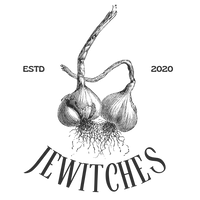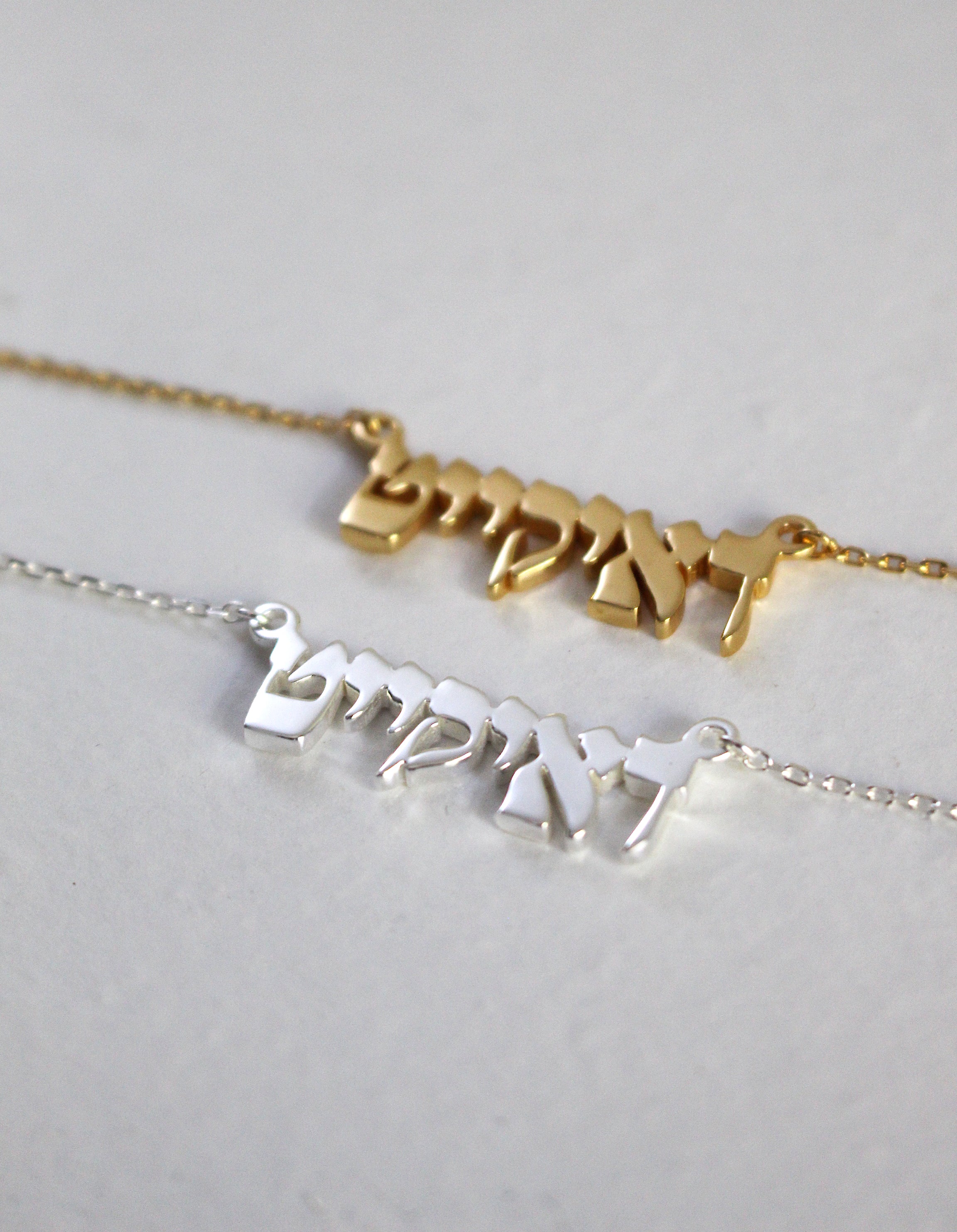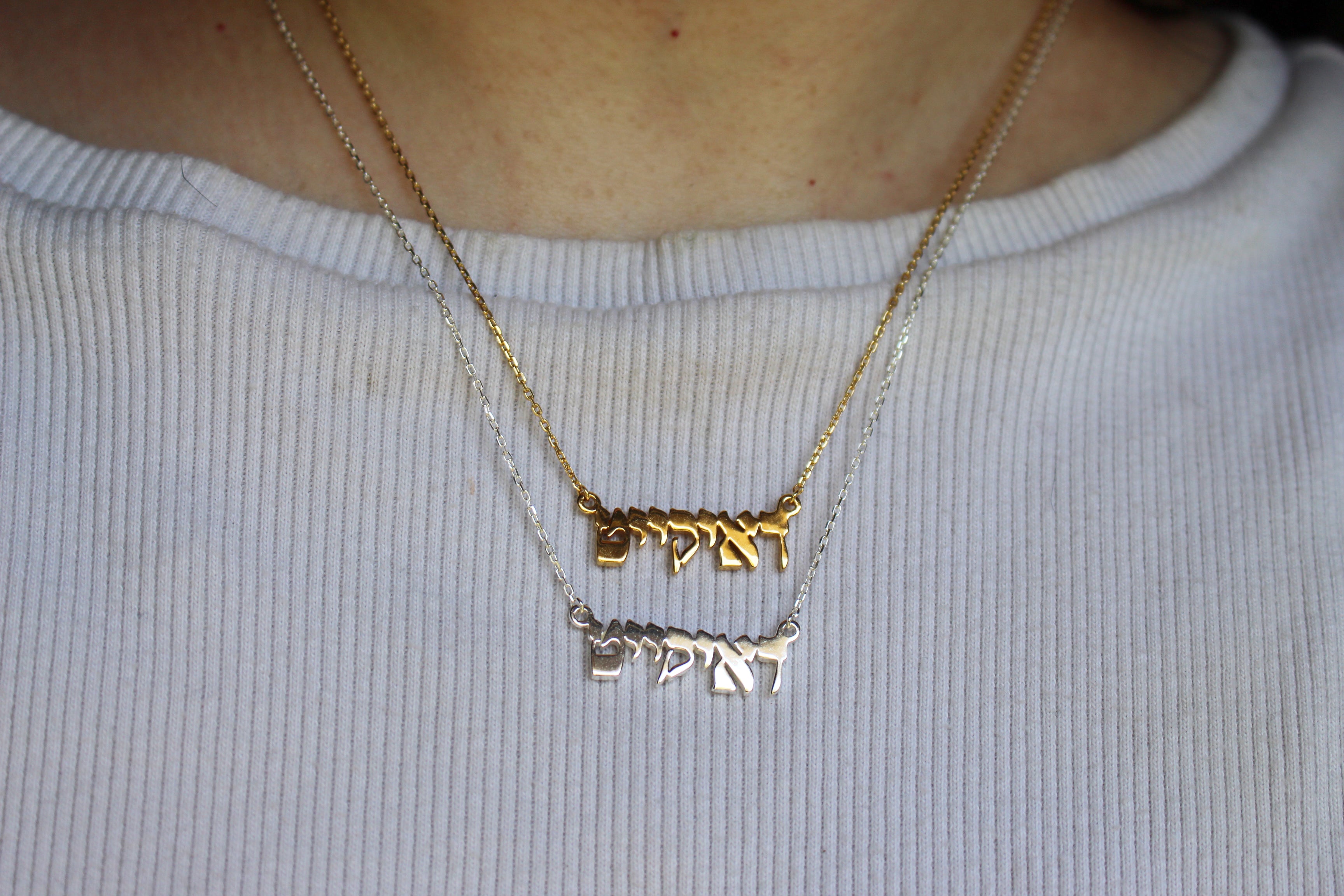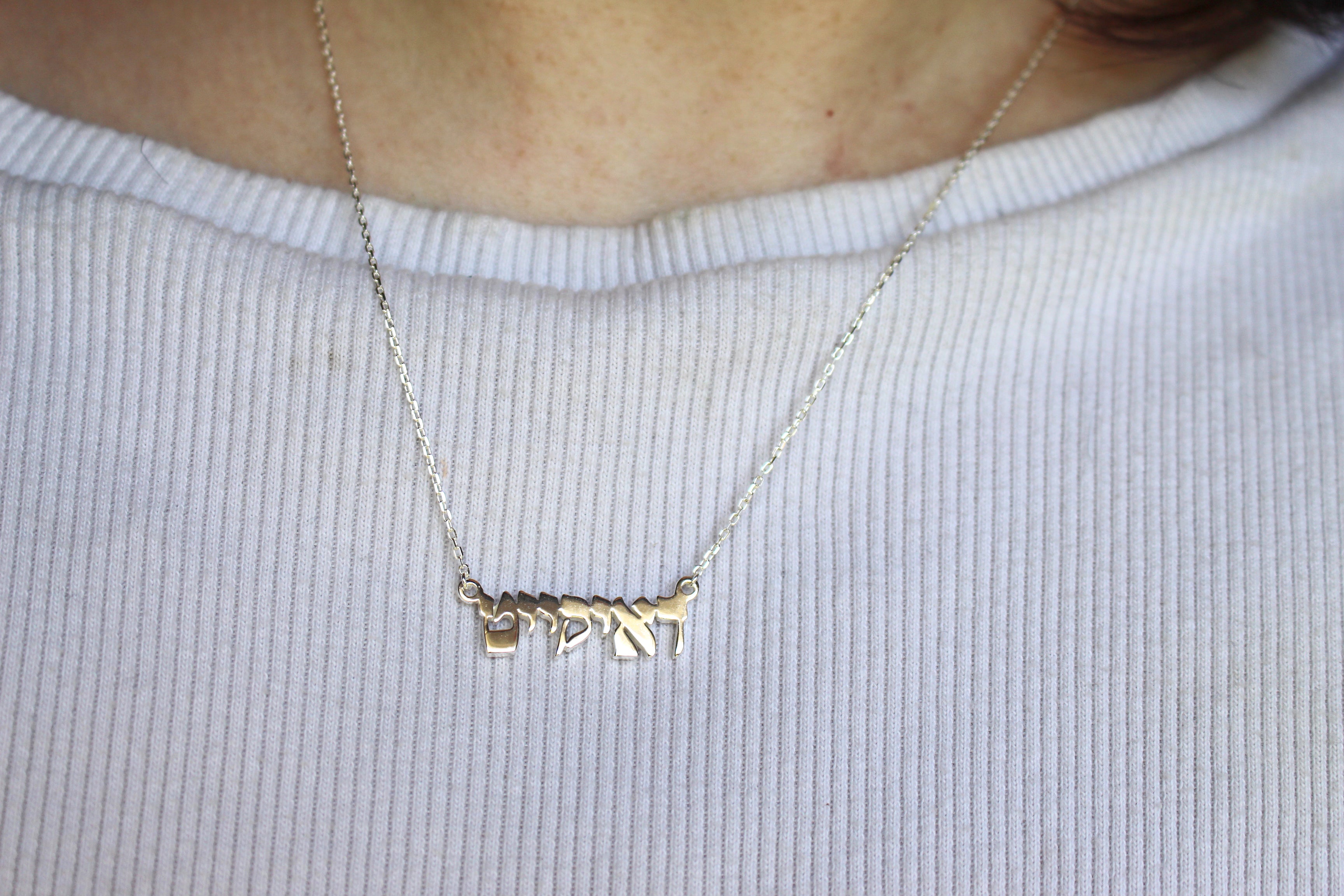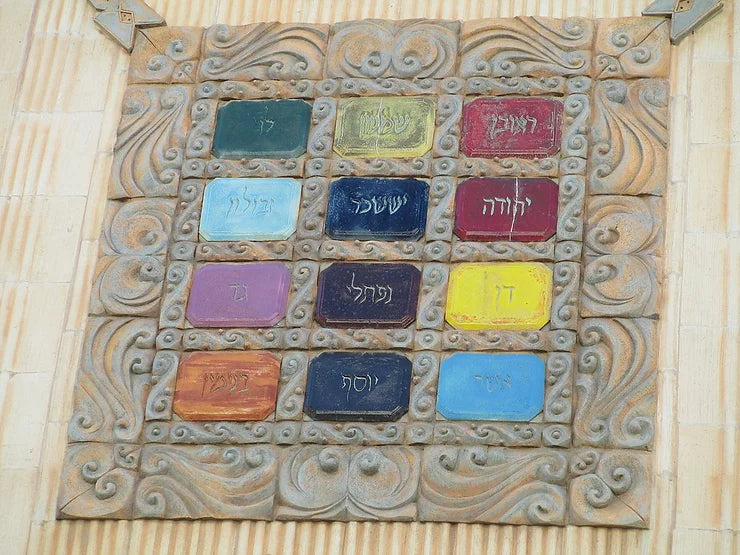For those seeking spirituality, crystals have become almost synonymous with mystical wisdom, but almost exclusively through New Age lenses. The New Age amoeba functions through appropriation and assimilation into itself: take from a culture, dilute the meanings, apply generalizations, mix and blend with other appropriations, spit back out. It is therefore not surprising that so many are shocked by the presence of wisdom surrounding stones in Judaism; after all, the mystical 'Judeo-Christian' entity envisioned by the New Age carriers of crystals often decry how devoid of magic and 'true spirituality' Judaism is. Of course, Judeo-Christianity does not exist, and precious stones have existed as an important part of the Jewish spiritual ecosystem since the time of the Exodus.
Precious stones is a good term that serves to encapsulate a wide variety of rocks, gems, and crystals that are included within the tradition.
"Jews were the leading importers of and dealers in gems during the early Middle Ages, and Christian Europe attributed to them a certain specialization in the magic properties of precious stones: Christianos fidem in verbis, Judaeos in lapidibus pretiosis, et Paganos in herbis ponere ("Christians put their trust in words, Jews in precious stones, and pagans in herbs"), ran the adage." ²
While New Age thought dominates much of the discussion surrounding precious stones, Jews are inundated with accusations of idolatry when found engaging with them through collection, owning, or, worst of all: believing in the function of a stone beyond its aesthetic appeal. But this is not new to Judaism in the slightest.
The tome Jewish Magic Before the Rise of Kabbalah discusses magic gems extensively, with Harari describing "about 5,000 such gems known today found mainly in the eastern Mediterranean... Lava, carnelian, a variety of jasper stones, lapis lazuli, sard, hematite, magnetite, limonite, and more. Some are also made of glass." ³ These magic stones could be engraved with the names of G-d, words, and symbols (like an etrog, lulav, menorah, etc), or be left whole.
In 1615 or 1616 Kraków, the Jewish community issued a law that forbade the wearing of precious stones, with the exception of pregnant women who could wear a ring containing one for its protective powers. Laws regarding the outlawing of wearing ostentatious precious stones were not uncommon in Jewish communities. They served multiple purposes: protecting the community from antisemitism and rumors, protecting the community from assimilation (assimilation oftentimes the result of the desire to no longer be the victims of antisemitism), and protecting the community from attacks stemmed from jealousy or threats of violence due to the perception of the community as unduly enriched.
We start with the time of the Exodus. After leaving Egypt, the Torah tells us of the creation of the Priestly Vestments, worn by the Kohanim, or Priests, of the Beit Hamikdash, or Temple. The connections surrounding precious stones forged here interweave and connect Jewish thought on the topic in the coming millenia.
It shall have two shoulder pieces attached; they shall be attached at its two ends. And the decorated band that is upon it shall be made like it, of one piece with it: of gold, of blue, purple, & crimson yarns, & of fine twisted linen. Then take two lazuli stones & engrave on them the names of the sons of Israel: six of their names on the one stone, & the names of the remaining six on the other stone, in the order of their birth. On the two stones you shall make seal engravings—the work of a lapidary—of the names of the sons of Israel. Having bordered them with frames of gold, attach the two stones to the shoulder pieces of the ephod, as stones for remembrance of the Israelite people, whose names Aaron shall carry upon his two shoulder pieces for remembrance before HaShem. Then make frames of gold & two chains of pure gold; braid these like corded work, & fasten the corded chains to the frames. You shall make a breast piece of decision, worked into a design; make it in the style of the ephod: make it of gold, of blue, purple, & crimson yarns, & of fine twisted linen. It shall be square & doubled, a span in length & a span in width. Set in it mounted stones, in four rows of stones. The first row shall be a row of carnelian, chrysolite, & emerald; the second row: a turquoise, a sapphire, & an amethyst; the third row: a jacinth, an agate, & a crystal; & the fourth row: a beryl, a lapis lazuli, & a jasper. They shall be framed with gold in their mountings. The stones shall correspond [in number] to the names of the sons of Israel: twelve, corresponding to their names. They shall be engraved like seals, each with its name, for the twelve tribes. On the breast piece, make braided chains of corded work in pure gold. Make two rings of gold on the breast piece, & fasten the two rings at the two ends of the breast piece, attaching the two golden cords to the two rings at the ends of the breast piece. Exodus: 7-24

Each of the precious stones was engraved with the name of one of the twelve tribes and was thus endowed with meaning throughout the ages. These meanings varied and fluxed, depending on community, translation, text, etc.
One such list describes these as:
Ruben: Odem (Ruby/carnelian). Helps child-birth.
Shimon: Pitda (Chrysolite/emerald). Cools body.
Levi: Bareket (Onyx/topaz). Enlightenment.
Judah: Nofech (Malachite/carbuncle). Overpower enemies.
Yissachar: Sapir (Lapis-Lazuli/sapphire). Helps eyesight, healing.
Zevulun: Yahalom (Zircon/diamond). Helps sleep.
Dan: Leshem (Jacinth/zircon).
Naftali: Shvo (Agate). Helps to ride.
Gad: Achlamah (Amethyst). Bravery.
Asher: Tarshish (Topaz/aquamarine). Helps digestion.
Joseph: Shoham (Beryl/onyx). Perceived well by all.
Benjamin: Yashpeh (jasper). Helps blood-clotting.¹
Joshua Trachtenberg, however, in his work, 'Jewish Magic and Superstition', dedicated a nearly a chapter to gems, detailing these various precious stones, as outlined in the unpublished 14th-century manuscript Sefer Gamatriot. It is important to note that the translations of the precious stones is different or directly contradicts what is previously shown in the above list. Modern Hebrew may also have different understandings of the words than previously used, as cited in a 14th-century manuscript. For example, in modern Hebrew, yahalom, means diamond, while it is translated by Trachtenberg and others as emerald or zircon or diamond.
Ruben: Odem [Ruby/carnelian]. "This is the stone called rubino. Its use is to prevent the woman who wears it from suffering a miscarriage. It is also good for women who suffer excessively in child-birth, &, consumed with food & drink, it is good for fertility.."
Shimon: Pitda [Topaz]. "This is the prasinum (?) but it seems to me it is the smeralda (?); it is greenish because of Zimri, the son of Salu (Nu. 25:14) who made the Simeonites green in the face...And it is dull in appearance because their faces paled. Its use is to chill the body...Ethiopia & Egypt are steeped in sensuality, & therefore it is to be found there, to cool the body. It is also useful in affairs of the heart..."
Levi: Bareket (Emerald/smarag). "This is the carbuncle, which flashes like lightning & gleams like a flame...This is the stone of Levi...it is beneficial to those who wear it; it makes man wise, & lights up his eyes, & opens his heart. Taken as a food in the form of powder with other drugs it rejuvenates the old..."
Judah: Nofech [carbuncle]. "This is the smaragd....It is green, for Judah's face was of a greenish hue when he mastered his passion & acknowledged his relations with Tamar (Gen. 38)...This stone is clear, & not cloudy like Simeon's, for when he was cleared of suspicion of Joseph's death his face grew bright with joy. The function of this stone is to add strength, for one who wears it will be victorious in battle; that is why the tribe of Judah were mighty heroes. It is called nofech because the enemy turns (Hofech) his back to one who wears it, as it is written, "Thy hand shall be on the neck of thine enemies' (Gen. 49:8)".
Yissachar: Sapir [Sapphire]. "The stone of Issachar, who 'had understanding of the times 9I Chr. 12:32) & of the Torah. It is purple-blue in color, & is excellent to cure ailments, & especially to pass across the eyes, as it is said, 'It shall be heal to thy navel, & marrow to thy bones' (Prov. 3:8).
Zevulun: Yahalom [emerald]. "This is the stone of Zebulun; it is the jewel called perla. It brings success in trade, & is good to carry along on, a journey, because it preserves peace & increases good-will. And it brings sleep, for it is written, 'Now will my husband sleep with me' (Gen. 30:20)".
Dan: Leshem [Jacinth]. This is the stone of Dan, which is the topaziah. The face of a man may be seen in it, in reverse, because they overturned the graven image of the idol (Jud. 18).
Naftali: Shvo [Agate] This is the stone of Naphtali, which is the turkiska. It establishes man firmly in his place, & prevents him from stumbling & falling; it is especially coveted by knights & horse-men, it makes a man secure on his mount. . .
Gad: Achlamah [Amethyst]. This is the stone called cristalo; it is very common & well known. It is the stone of Gad, because the tribe of Gad are very numerous & renowned. . . . There is another gem called diamanti which is like the cristalo, except that it has a faintly reddish hue; the tribe of Gad used to carry this with them. It is useful in war, for it buoys up the heart so that it doesn't grow faint, for Gad used to move into battle ahead of their brothers…This stone is good even against demons & spirits, so that one who wears it is not seized by that faintness of heart which they call glolir (?).
Asher: Tarshish [beryl]. "Tarshish (beryl] This is the yakint (jacinth]; the Targum calls it the 'sea-green,' which is its color. It is the stone of Asher. Its utility is to burn up food. No bad food will remain in the bowels of one who consumes it, but will be transformed into a thick oil. For it is written, 'As for Asher, his bread shall be fat' (Gen. 49:20)...
Sometimes the sapphire is found in combination with the yakint, because the tribes of Asher & Issachar intermarried. . . . Because the bread of Asher is fat for all creatures, & the faces of stout people are ruddy, the yakint is sometimes of a reddish hue.
Joseph: Shoham (onyx). This is the stone called nikli [nichilus, an agate].It is Joseph's stone & it bestows grace. . .. One who wears it at a gathering of people will find it useful to make them hearken to his words, & to win success.
Benjamin: Yashpeh [jasper]. This is Benjamin's; it is called diaspi, & is found in a variety of colors: green, black, & red, because Benjamin knew that Joseph had been sold, & often considered revealing this to Jacob, & his face would turn all colors as he debated whether to disclose his secret or to keep it hidden; but he restrained himself & kept the matter concealed. This stone yashfeh, because it was a bridle on his tongue, has also the power to restrain the blood.
There have been powerful arguments for which stone should be interpreted; however, due to the long-standing disagreement, there have been many different properties assigned to each of the stones. For example, ruby, carnelian, and other red stones have long served as protective charms and amulets for birthing parents and newborn children because of their red colour. As suggested in Trachtenberg's translation, it was also suggested to be consumed. "Another Italian Jewish physician recommended jasper for easing delivery; the Bible tells that, in the breastplate of the high priest, jasper is the stone of Benjamin, whose mother died when he was born".
"Bahya ben Asher's commentary on the high priest's breastplate proposed that the red stone representing Reuben grew in certain places in the sea-apparently coral-and explained its accepted in un promoting fertility by method of word association....Baya ben Asher, who was writing in Spain, and the Germanic author of the Ashkenazi manuscript probably both knew of an older text on the medical use of gemstones" .⁷

"Coral is said to be a powerful protector against both sorcery and the Evil Eye. It is thought to keep women sane, healthy, modest, and fertile. - Ruth Weisberg"
Coral is a powerful protective substance included in amulets, particularly those of children and laboring parents. As Bahya ben Asher argued that it was it was actually the red gem found within the priestly vestments, it was a common protective amulet among many cultures. It was often highly expensive and, therefore, extraordinarily prized. Amulets made of it were generally reserved for the most vulnerable within society: children and birthing parents as well as brides. This love of coral spread across the diaspora and could be found in German Ashkenazi communities and Yemenite Jewish communities alike. In Barcelona, there were Jews involved in the trade of coral, and researchers, though not focused on the topic, also concluded, "[p]ieces of coral jewelry were offered as amulets for protection to children in the fourteenth century." ⁹
Red threads, ribbons, or coral bracelets would be tied around infants' and children's wrists, and sometimes also around the little finger on one hand; sleeves might be hemmed with red thread. In the folk imagination, red was associated with fire, and protective objects of this colour attracted and then absorbed (and hence neutralized) the gaze of people with the evil eye;" ¹⁰
"Om Southern Yemen, a necklace would consist of seven strings of alternating silver and coral beads worn only on special occasions. In the middle, there was a small, tubular filigree charm case with delicate pendants that would ensure protection for the wearer" ⁶

Pearls are not only beautiful but were a staple within Ashkenazi Jewish communities. Born in what is now Belarus, memoirist Yekhezkl Kotik observed "even the poorest women wore strings of pearls", though it is important to note that when one did not have access to the genuine article, imitations were worn.⁸ Perhaps this is due to the use of pearls within Judaism as representative of beautiful and rare items; particularly Proverbs 31:20, a blessing said to women: "Who can find the woman of valor? Far more than pearls is her worth."
Pearls were often used in Jewish art, as well as within jewelry, headdresses (particularly Sterntichels, etc), and ritual tools. They are also mentioned numerous times in Jewish texts, entrenching them as an item of value to be prized by Jews.

In Pirkei d'Rabbi Eliezer, midrashic retellings of Torah stories, it is said that within the belly of the whale, Jonah finds light in a pearl.
"Rabbi Meir said: || One pearl was suspended inside the belly of the fish and it gave illumination to Jonah, like this sun which shines with its might at noon; and it showed to Jonah all that was in the sea and in the depths, as it is said, "Light is sown for the righteous" (Ps. 97:11)."
"One may go out with a preservation stone, which prevent miscarriages, on Shabbat. They said in the name of Rabbi Meir that one may go out even with the counterweight of a preservation stone; i.e., a stone or another object that was weighed against and found equivalent to the weight of the preservation stone, which is also effective. And this leniency applies not only to a woman who miscarried in the past and is concerned that she may miscarry again; rather, it applies even to a woman who never miscarried and is concerned lest she miscarry for the first time. And it applies not only to a woman who is aware that she is pregnant; rather, it applies even if a woman suspects that she may become pregnant and miscarry. Rav Yeimar bar Shelamya said in the name of Abaye: And this applies only when he happened upon an object that was found equal to the preservation stone when he weighed it against that stone, not when one alters the object to equal the weight of the preservation stone. Abaye raised a dilemma: With regard to a counterweight to the counterweight, i.e., one who finds an object and determines its weight by weighing it against the counterweight of the preservation stone, what is its legal status? May a woman go out into the public domain with it? The Gemara concludes: Let this dilemma stand unresolved." Shabbat 66b 20
Aetites, also known as Eagle Stones, are believed to be called "preservation stones" or even tekumah within Judaism. However, because of the vague nature of discussion, it allows for a broad range of interpretations within Jewish culture. As the above quote from the Talmud shows us, it was permitted even on Shabbat as one was pregnant to wear their preservation stone. This is similar to the law cited above regarding wearing red stones in order to help with pregnancy.
The exact nature of preservation stones, however, are a bit less known. Trachtenberg cites, "Several medieval writers were more informative, but unfortunately, they employed one or perhaps several French equivalents whose meanings in Hebrew transliteration are not altogether clear, but which show that these were in common use. One writer went into some detail: "This stone is pierced through the middle, and is round, about as large and heavy as a medium-sized egg, glassy in appearance, and is to be found in the fields," he explained. The French terms seem to indicate a hollow stone within which is a smaller one, a sort of rattle (perhaps the eaglestone or ætites); a later commentator calls it a Sternschoss (meteoroid)". ⁴
The functionality through sympathetic magic is discussed by Harari,
"The way in which they were used in the treatment process depended on the mental connection that existed in the patient's life and the properties of the potential remedy or its ingredients. The simplest example illustrating this is that of 'whispering' shells, which were used in treating tinnitus. Amulets from 'eagle stone'--a stone with one or more smaller stones inside it--were worn as protection against miscarriage. The Jewish populace tended to believe stones of this type to be sternshis, shooting stars. From the angle of folk medicine, what is most important here is the similarity between the shape of the pregnant woman's belly and that of the stone. Just as teeth could be either as strong as stone or as soft and weak as meat, so a woman's womb might be strengthened by virtue of her wearing a 'stone' amulet.³
The Tzohar stone is often included in discussions regarding precious stones in Judaism, as it is undoubtedly important. However, commenters like Rashi have debated whether or not it is even a stone, "Some say this was a window; others say that it was a precious stone that gave light to them" (Genesis Rabbah 31:11). The version in Sanhedrin 108b seemingly agrees here: "Make a tzohar for the ark," R. Johanan said, "The Blessed Holy One instructed Noah: "Set there precious stones and jewels, so that they may give you light, bright as the noon"." Rabbi Dennis' text indicates that there is a play on words regarding the word tzohar and the words tzohoriyim here.'" Some believe it to be "a fragment of supernal light given to Adam and his descendants"; however, like with many things, the Jewish community is happiest without coming to a consensus on this. However, the Midrash Pirke de Rabbi Eliezer 23 indicates that Avraham the Patriarch may have had a stone similar to this one,
"R. Shimon b. Yochai said, Avraham had a precious stone hung around his neck which brought immediate healing to any sick person who looked on it, and when Avraham our father left this world, the Blessed Holy One hung it from the wheel of the sun. (B.B 16b) ¹¹
The stories of who possessed this incredible stone have spread throughout the diaspora, as the owner "not only has illumination, but access to the secrets of the Torah and all its powers". Rabbi Dennis outlines some of its supposed changing of hands as follows: after the Fall, the angel Raziel passes it to Adam. It is given to Noach. As we've read, some claim it stops at Avraham after Noach when it is hung on the sun, but others claim it continued on earth. Joseph used it for dream divination. Moses found it among his bones and put it in the Tabernacle. The ohar claimed the Simon Ben Yoachai had it in the Rabbinic era. (Sanh. 108b. B.B16b, Lev. R. 11; GEn R. 31:11, Zohar I:11a; Otzer ha-Midrash).¹¹

It is believed that one of the first mentions of birthstones was by Josephus, a Romano-Jewish first-century historian born in Jerusalem. He believed there was a correlation between the Twelve Tribes and the months, giving each month a stone that would be sacred to it. However, in the modern day, there is seemingly no agreed-upon correlation between the months of the Hebrew year and the Twelve Tribes, though there are many lists. The 'official' lists of birthstones have nothing to do with the Priestly Vestments but are rather agreed upon by official gemological organizations. Because of its secular nature, many Jews take no issue with wearing these birthstones (especially as the concept was originally Jewish).
Let us also not discount the importance and vitality of beauty. Hiddur Mitzvah has multiple meanings, but its literal meaning is the "beautification of the mitzvah" or "enhancement of the mitzvah". It can also be interpreted as the "meticulous observance of a mitzvah beyond the formal demands of the law". Through this concept, Jews found balance. In a community wherein modesty and adornment coexist, beautiful things exist to enhance the experience of life and devotion. We beautify our ritual tools to sanctify them and to create a meaningful space for creating ritual. There is extensive inclusion of precious stones in items such as Shabbat candles, Havdalah sets (besamim boxes, havdalah candle holders, etc), knives (circumcision blades, challah knives, magical knives), swords, Torah crowns, Yads (Torah pointers); not to mention ritual and ceremonial wear like incredible Jewish jewelry, headdresses (like the Yemenite Gargush, Ashkenazi Sterntichel, kippot, etc), wedding dresses, robes, shoes, etc cannot be excluded from our discussion.
But outside of ritual, there is the mundane: art, jewelry, normal clothes: we may see them as trivial, they served an important purpose in beautifying the lives of our ancestors. Just as the recent trend to "romanticize our lives" has gripped the younger generations, so have our ancestors sought to beautify and love their journeys; and to do so was not only auspicious but could be a representation of devotion and love of Judaism, Jewishness, and what it meant to be alive as Jews: basking in Jewish culture, whatever that meant and looked like for them.
"Rabbeinu's Bechaye's claim that in order for the power of these stones to be effective, the user must be ritually pure. He warns that if a person is not ritually clean, the stones will be either ineffective or even harmful. The topic of ritual purity is quite involved with a long list of laws and details, but at the simplest level today it involves immersion in a ritual bath (Mikveh) within the guidelines of Jewish law. He explains that the stones interact based on a person's spiritual level, where purity or impurity plays an important role." Like with so many things in Judaism, the tools that are used are not unique solely to Judaism: it is through the methodology and the routine and life outside of the specific act that brings in to focus how the act is interpreted. When one wears a red stone for protection, that does not automatically make it a Jewish act for this is a superstition, folk tradition, and belief that exists in many cultures around the globe. However, when this person is Jewish, lives their life by Jewish principles, and performs this act because of their Judaism, this act becomes Jewish. And according to a very common belief, when someone lives their life in a ritually pure manner--ritual purity as described by their community--the stones will act in the way they are prescribed; but not if they live outside of the manner of appropriate conduct as prescribed by their community (this is particularly true when it comes to harmful acts to their community: violence, abuse, etc).

"Just as we have been taught in Bereshit Rabbah 10,7 that there is no herb on earth which does not have its counterpart in the celestial regions providing it with its individual mazzal, so the same is true of the precious stones. Having carefully absorbed what we have written about the gemstones in the garments of the High Priest you will note that he was surrounded by the names of the tribes of Israel both in front and behind, seeing these names were inscribed both on the breastplate and on the shoulder pieces of the ephod." Rabbeinu Bahya, Sehmot 28:15, Torah Commentary by Rabbi Bachya ben Asher, trans. Eliyahu Munk, 1998.
Judaism often struggles internally with the use of amulets, though the usage of amulets (kameyot) has never wavered; no amount of rabbinical finger-wagging ever put an end to the inherent belief in amulets that has always existed in Judaism. The rationalism that we so often associate with our 'religion' is as new a concept as that of 'religion' itself. Precious stones are a stunning part of Judaism, but just as we are taught: no gem is as beautiful as wisdom.
Comprehensive list of stones mentioned in this article:
Aetites
Agate
Amethyst
Aquamarine
Beryl
Carbuncle
Carnelian
Chrysolite
Coral
Diamond
Emerald
Hematite
Jacinth
Jasper
Lapis Lazuli
Lava
Limonite
Magnetite
Malachite
Onyx
Pearl
Ruby
Sapphire
Sard
Topaz
Turquoise
Zircon
Enjoy Jewitches free educational content? Support their work and become a Patron for as little as $1 per month, or make a one time donation via Kofi or BuyMeACoffee!
Sources:
-
https://www.chabad.org/kabbalah/article_cdo/aid/3965005/jewish/Twelve-Precious-Jewels.htm
-
https://www.jhom.com/topics/stones/gems.html
-
Jewish Magic Before the Rise of Kabbalah, Yuval Harari
-
Jewish Magic and Superstition; Joshua Trachtenberg
-
https://www.sefaria.org/Pirkei_DeRabbi_Eliezer.10.8?lang=en
-
https://www.oxfordchabad.org/templates/blog/post.asp?aid=708481&PostID=107902&p=1#_ftnref6
-
A Time To Be Born: Customs and Folklore of Jewish Birth by Michele Klein
-
https://yivoencyclopedia.org/article.aspx/dress
-
Nottingham Medieval Studies LIII (2009). Coral, Silk and Bones. Jewish Artisans and Merchants in Barcelona between 1348 and 1391
-
A Frog Under the Tongue: Jewish Folk Medicine in Eastern Europe, Marek Tuszewicki
-
The Encyclopedia of Jewish Myth, Magic, and Mysticism, Rabbi Geoffrey W. Dennis
-
https://www.sefaria.org/Rabbeinu_Bahya%2C_Shemot.28.15.4?lang=bi
